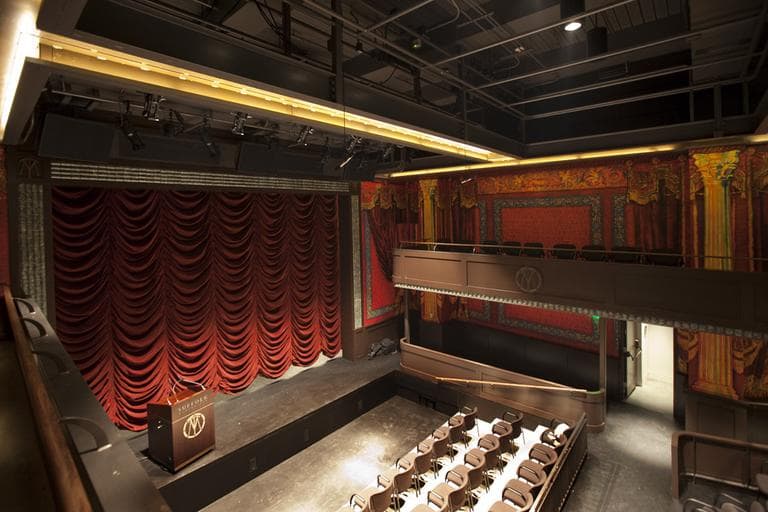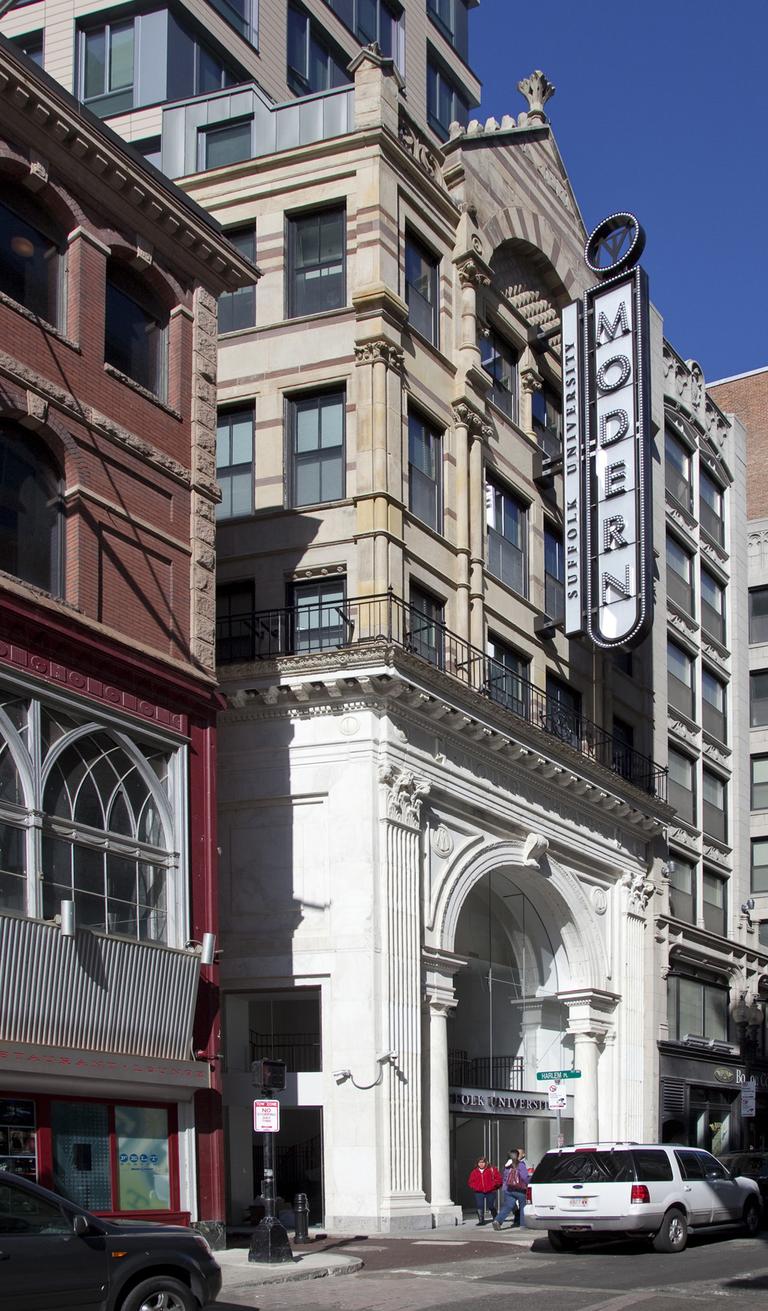Advertisement
Theater District Revival Continues With The Modern

The revitalization of Boston's Washington Street Theater District reaches another milestone Thursday with a ribbon-cutting ceremony at the historic Modern Theatre.
It’s the last of three old theaters to be resuscitated in the Downtown Crossing area, following the Opera House and the Paramount.
Suffolk University purchased the Modern in 2008, according to Marilyn Plotkins, chair of the school’s Theater Department. She's been at the center of the building's revitalization, and said the city agreed to let Suffolk buy the historically significant Modern with a caveat: the school would have to restore the existing façade and structure, in addition to constructing a 10-story residence hall above the theater.
“So we got a two-for-one deal,” Plotkins recalled. “We inherited this wonderful space for an intimate jewel box theater, and then we were able to build dormitory space on top of it. “
Plotkins said the historic Modern has been painstakingly rehabbed, panel-by-panel, stone-by-stone. For her, this moment ushers in a sense of completion for Boston’s Washington Street theater district, with the “row of three beautiful ladies” — meaning the Modern, the Paramount and the Opera House — "brought back to life," she said.

The Modern is the smallest venue of the three. It first opened as a movie house in 1913, and introduced “talking pictures” –- including "The Jazz Singer" -– to Boston audiences. The theater’s original owner, Jacob Lourie, also devised the concept of the double feature, which became wildly popular in movie houses across the nation.
Over time though, the building went dark and began its degradation. In the 1980s it was a wreck, according to Plotkin, even with the façade’s 1979 designation with the National Register of Historic Places.
Plotkins recalled the first time she stepped inside the rundown Modern, back in the earliest stages of Suffolk's renovation project.
“It was just a ruin,” she said. “It had gone to seed because only the facade was historically protected and had received landmark status, not the interior.”
Windows were broken and detailed woodwork was damaged. But Plotkins said the building’s stunning aesthetic felt familiar, and made her wonder about the architect who built it.
Advertisement
The proscenium panels looked like “somebody’s fancy Beacon Street parlor,” she explained, but they also reminded her of the interior of the nearby Wilbur Theatre.
“So that sent me on a mission to prove the architectural significance of the theater,” Plotkin said. “And so, with the help of some really wonderful librarians at the Athenaeum, I learned that the architect was Clarence Blackall, one of Boston's most respected architects.”
Blackall designed the Winthrop Building, said to be the first steel-framed skyscraper in Boston, along with the Wang Theater, the Wilbur and the Colonial.
Plotkins said the current design and architecture team went to great lengths during the restoration process to ensure the new Modern would retain the essence and shimmer of its glamorous past. You can even see an intact 22-foot decorative scrim that’s been carefully returned to its original splendor. The Modern's new jewel box theater is updated and intimate, said Plotkins, with only 185 seats.
Suffolk University plans to feature an array of live performances, films and lectures at the Modern. For now, though, the public is invited to take tours of the updated theater this Thursday and Friday.
This program aired on November 4, 2010. The audio for this program is not available.
